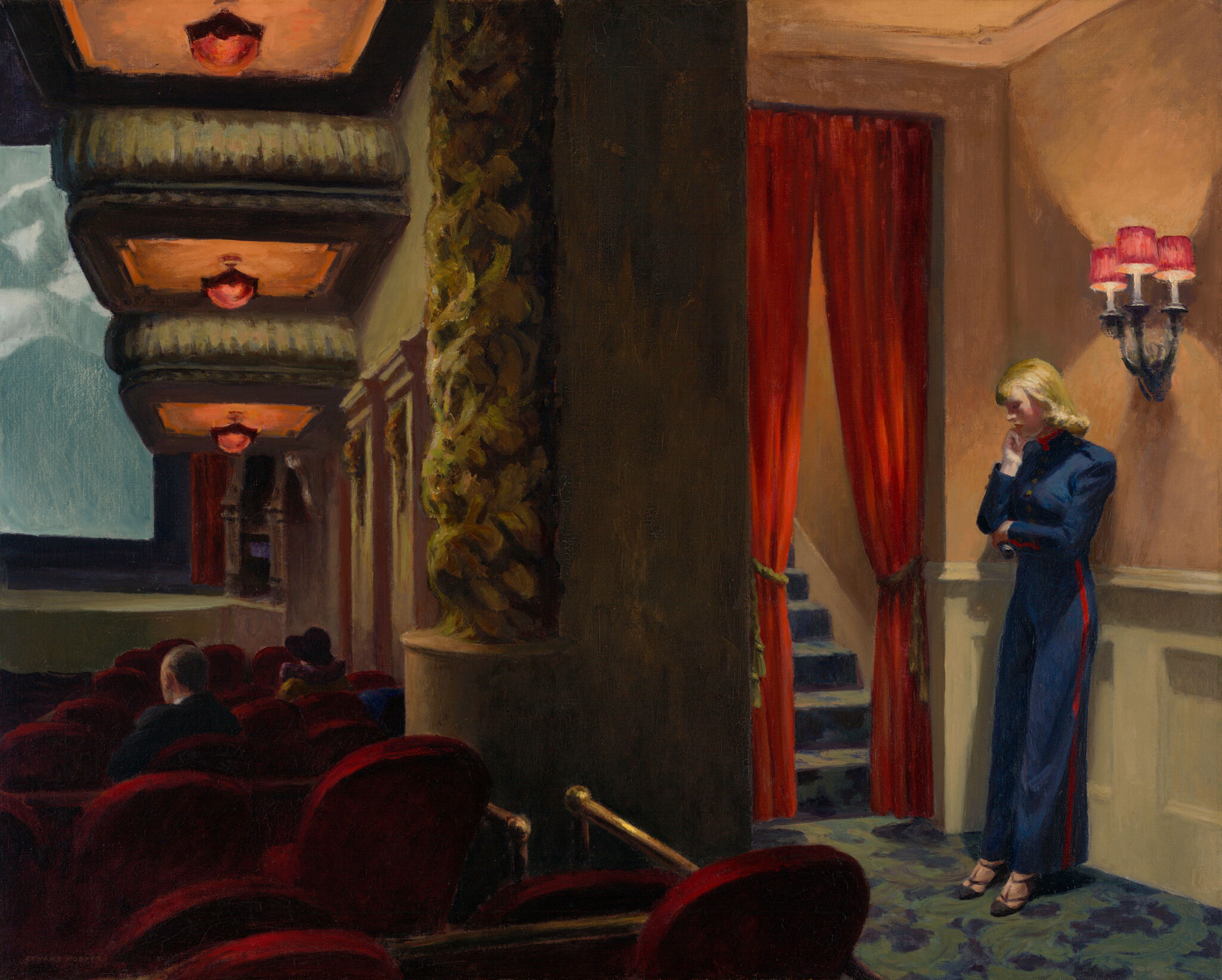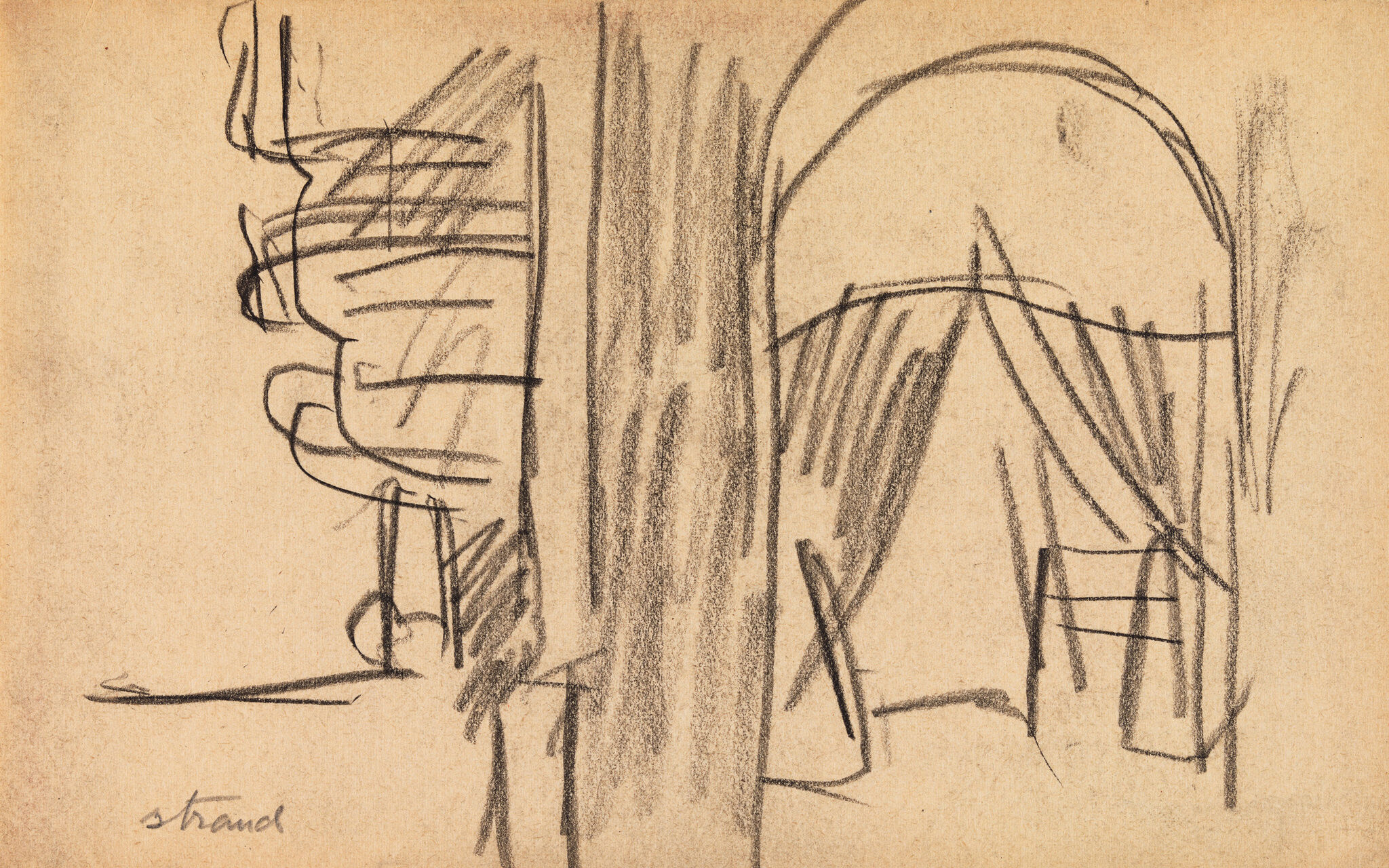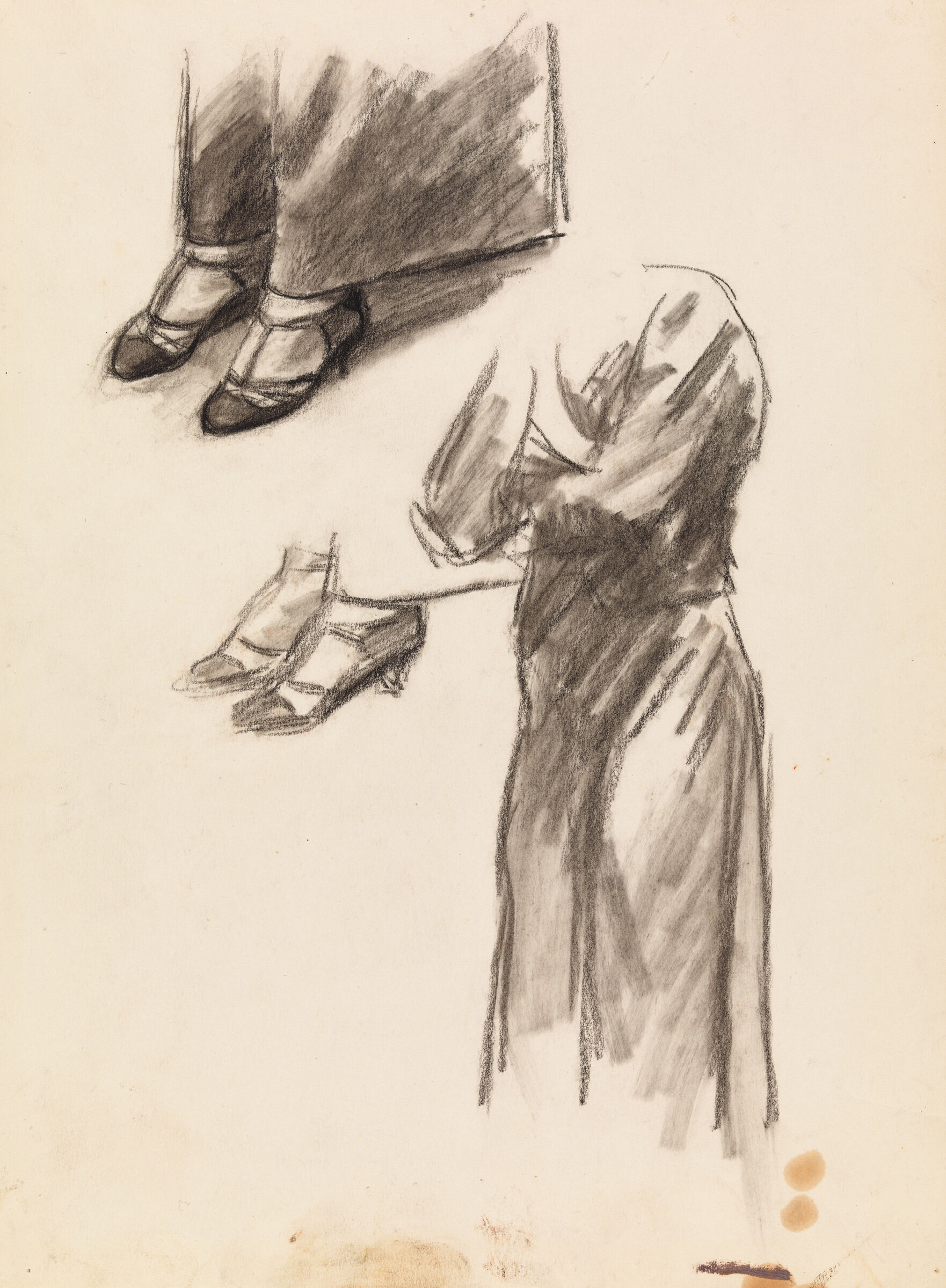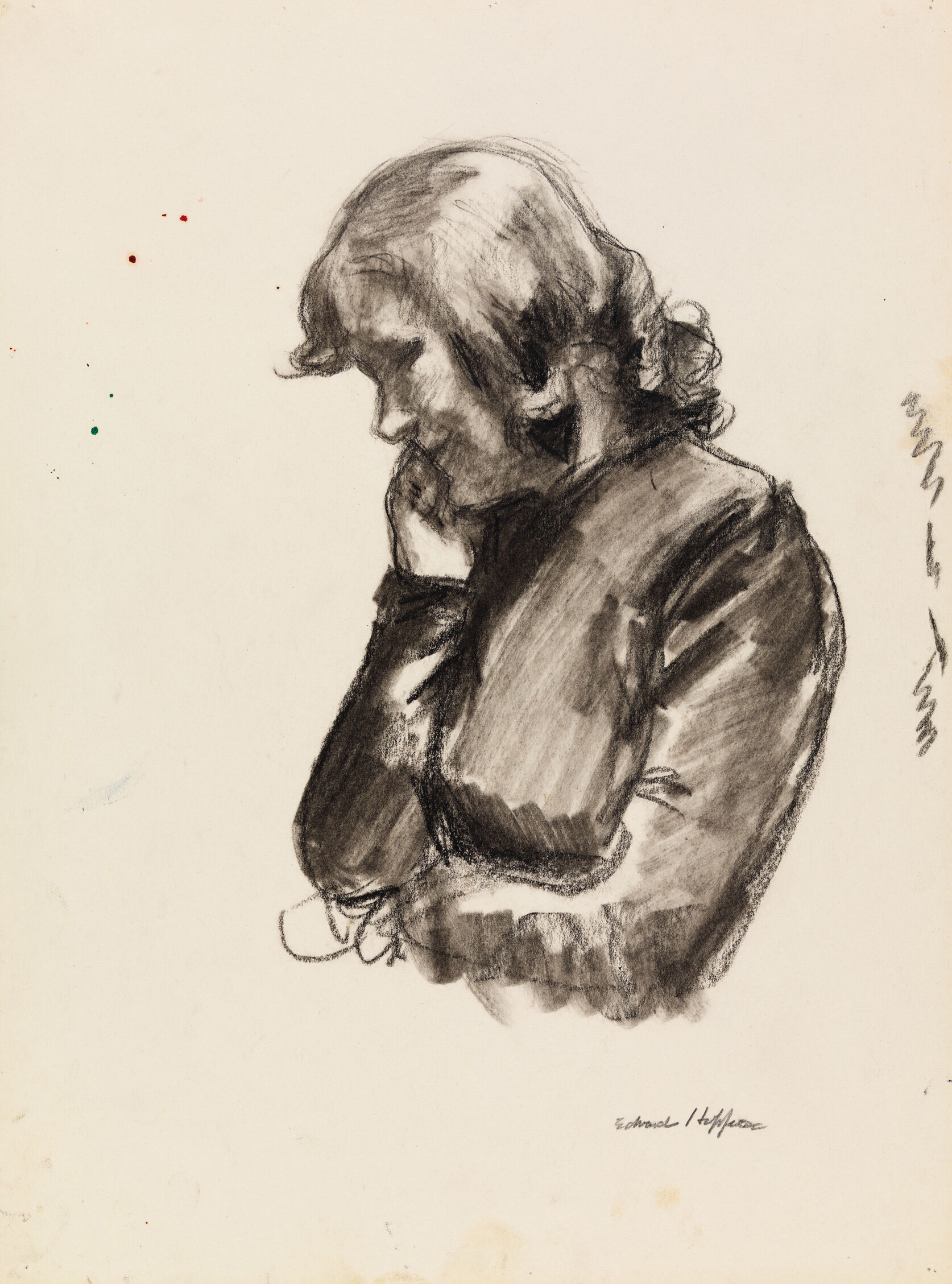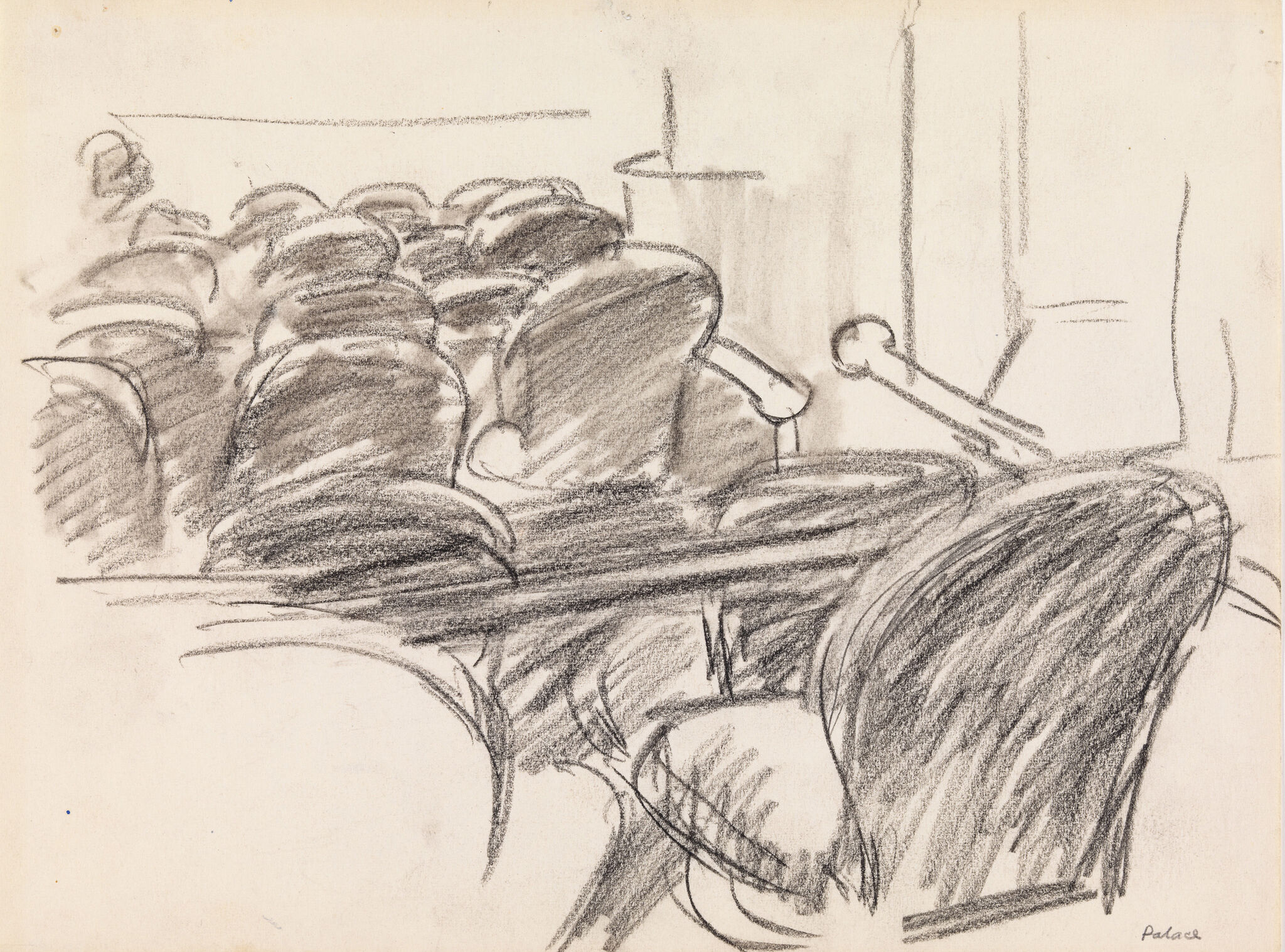New York Scenes
The Hoppers were avid theater and movie goers. In the Museum’s Sanborn Hopper Archive are more than 130 ticket stubs, each annotated in Hopper’s own handwriting with the title of the show. He also made a list of theaters with second balconies, his favorite place to see productions. Some theaters Hopper depicted have disappeared. Where The Circle Theatre stood are shops at Columbus Circle and the Sheridan Theatre is now a park with an AIDS memorial.
Hopper once confessed, “Most of my paintings are composites—not taken from any one scene.” New York Movie is one such painting, and is divided into two distinct areas by an ornate leafy column. To the left is the cinema screen and moviegoers and the usher and stairs are to the right. The screen displays a frame from a film that has been identified as Frank Capra’s 1937 movie Lost Horizon. The Hoppers, who were passionate about the theater and loved going to movies, sometimes attended multiple productions in a single week. Hopper relied on numerous drawings of real theaters including The Globe, The Palace, The Republic and The Strand to create the composite interior in the work. Jo, his wife, was the model for the usherette. Regarding the difficulty Hopper had in composing this painting, Jo described, “It is such a difficult subject…Not to be there as he looked—not even taken from any one theatre—bits from all of them.”
While attending movies and plays, Hopper frequently sketched during breaks. The imagined interior Hopper created for New York Movie is based on a composite of several theaters: Fifty-three existing sketches show the distinct architectural details Hopper drew of each of the theaters he visited.
In New York Movie, Hopper combined aspects of real people and places with his imagination. He used as a starting point dozens of sketches he did from observations of theaters he attended and drawings he did of Jo, his wife. Jo, who had a background in acting and was a member of the amateur Washington Square Players troupe, would pose on a low wooden platform in their 3 Washington Square North studio-residence. Throughout Edward’s career, Jo served as the principal model for the female figures in his paintings. Jo would wear different costumes and hold a variety of props she acquired, but the jumpsuit depicted in the painting is reminiscent of the uniform worn by The Palace Theaters female staff during the period. Jo commented, “And he always wants me to do something that’s anatomically impossible.” Hopper would gradually alter his images of her until eventually, as Hopper explained, “It doesn’t look anything like her usually.”
Activities
How would you represent a compilation of memories?
In New York Movie, Hopper portrays an amalgamation of drawings he made onsite at several theaters with sketches of Jo posing in their studio-residence. Ask students to recall important memories in their lives. Have them think about how they could combine them in a meaningful way. Encourage them to make a work of art in the medium of their choosing, which represents the compilation. Have them reflect on their artistic decisions.
How could you portray a cinematic/theatrical moment?
The Hoppers attended hundreds of stage productions and movie screenings, and Edward Hopper was keenly aware of the separation between spectacle and viewer. With New York Movie, Hopper fine-tuned the “staging” of his composition, making us aware of division between action and spectator, the painting and us. Encourage students to become keen observers of their surroundings and their actions within them. Ask them to think about how they could present that awareness of the observer and the observed in a dramatic moment of their choosing. Have them thoughtfully consider their medium and create their works.
How would you compose a nocturnal drama?
Hopper once asked, “Do you notice how artificial trees look at night? Trees look like theatre at night.” Have students think about how they could compose a theatrical night scene. Ask them to carefully think about how they can use the dramatic play of light, either artificial or natural, shadows and the dark in their nocturnal scenes. Encourage them to experiment with different materials to develop rich color hues or a broad range between black to white. Students could also make auditory, three-dimensional, or movement pieces. Have students present the works and discuss their peers’ decisions.
How would you express an artwork’s opinion?
Hopper wrote, “Self expression is a product of years of work and study…it has a great deal of cerebral invention as an element in it…Art like life is hard.” He also professed his work had no “conscious themes” and any “psychological idea would have to be supplied by the viewer.” Ask students to select an artwork they previously made. Have them think about what their work might “say” to the public or themselves, the artists. What might the piece be thinking or feeling? Invite students to write a monologue or dialogue for their artworks. Have students recite or act out their scripts. Encourage students to reflect on how this activity added to or perhaps changed their perspectives of the works.
Additional Ressources
The Museum of Modern Art: video detailing close observations of New York Movie

